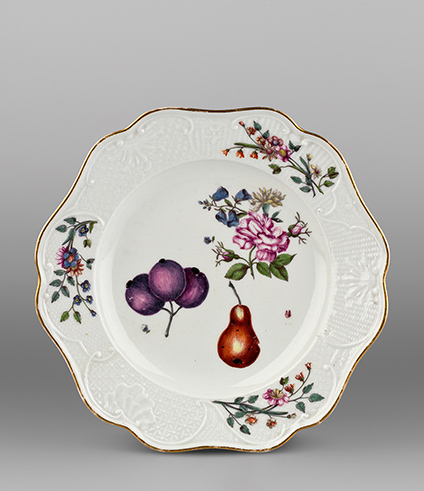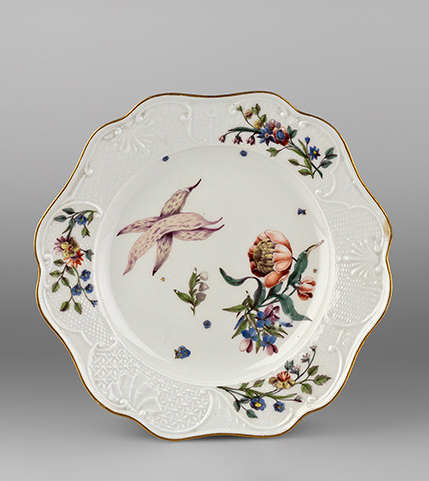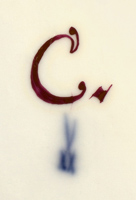



Roland Blaettler, 2019
Heinrich, Count von Brühl (1700–1763) was one of the most powerful and influential figures in the Electorate of Saxony and the Kingdom of Poland under the rule of Augustus II the Strong and his successor Frederick Augustus II. He was the main confidant of Augustus the Strong who literally showered him with public offices. After the death of King Augustus II in 1733, Brühl managed to increase his power in the reign of the late king’s clearly much weaker successor and the title of Prime Minister was created for him in 1746. One of the many offices he held over the course of his life and career was that of Director of the Royal Porcelain Factory at Meissen.
Count von Brühl was well known as an art collector. He created a library and an art gallery at his palace in Dresden and in the buildings of the Brühl’s Garden. Brühl was a typical representative of absolutism; he was keen to demonstrate his power by maintaining an extremely lavish lifestyle. Meissen porcelain played a key role in the display of ostentation in his palaces. Two of the main services ordered by Brühl caused a sensation in the history of European porcelain manufacture: the famous Swan Service of 1737–1742 and the “Brühl’sches Allerlei” [Brühl’s varied design], so named for its relief decoration which was used on all of the pieces. The service, which ultimately totalled more than 2000 pieces, kept the factory busy from 1742 to 1747 (Lessmann 2000). The shapes were created mainly by Johann Friedrich Eberlein (1695–1749), principal assistant to master modeller Johann Joachim Kändler. Johann Gottlieb Ehder (1716/17–1750) was also involved. The painted designs combined “German flowers”, fruits and vegetables from copper engravings in works including the four volumes of Phytanthoza Iconographia, a work by Wilhelm Weinmann published in Regensburg between 1737 and 1745. Weinmann’s models were mainly used for the fruits and vegetables. Like all great ensembles of this kind, it originally consisted of a dinner and dessert service. The pieces belonging to the dessert service usually carried the “Conditorey” [patisserie] mark ‘C’ (see HMO 8766).
Today, pieces from this service are relatively rare and public collections generally only hold individual items (Cassidy-Geiger 2008, 462–465, two plates and a tureen). The largest collection is in the State Hermitage Museum in St Petersburg and comprises 38 objects. Other pieces are in private collections in America or were sold at public auctions, by Sotheby’s London in 1977 or by Christie’s New York in 2012. The Historical Museum of Olten has four plates (HMO 8565, HMO 8566, HMO 8765 and HMO 8766) as part of the Maria Christen-Faesch bequest of 1959 (Felchlin 1961, 12). Another plate is kept at Nyon Castle (MHPN MH-PO-4382).
Translation Sandy Haemmerle
References
Blaettler/Schnyder 2014
Roland Blaettler/Rudolf Schnyder, CERAMICA CH II: Solothurn (Nationales Inventar der Keramik in den öffentlichen Sammlungen der Schweiz, 1500-1950), Sulgen 2014, 282.
Bodinek 2019
Claudia Bodinek, Ein Meissener Porzellanservice für den Grafen – Das Brühl’sche Allerlei. Keramos 235/236, 2017 (erschienen 2019), 4–134.
Cassidy-Geiger 2008
Maureen Cassidy-Geiger, The Arnold Collection of Meissen Porcelain 1710-1750. New York/London 2008.
Felchlin 1961
Maria Felchlin, Die Bedeutung der Porzellansammlung Maria Christen-Faesch im Historischen Museum Olten (Sonderdruck aus Heimat und Volk, Beilage zum Oltner Tagblatt), Olten 1961.

